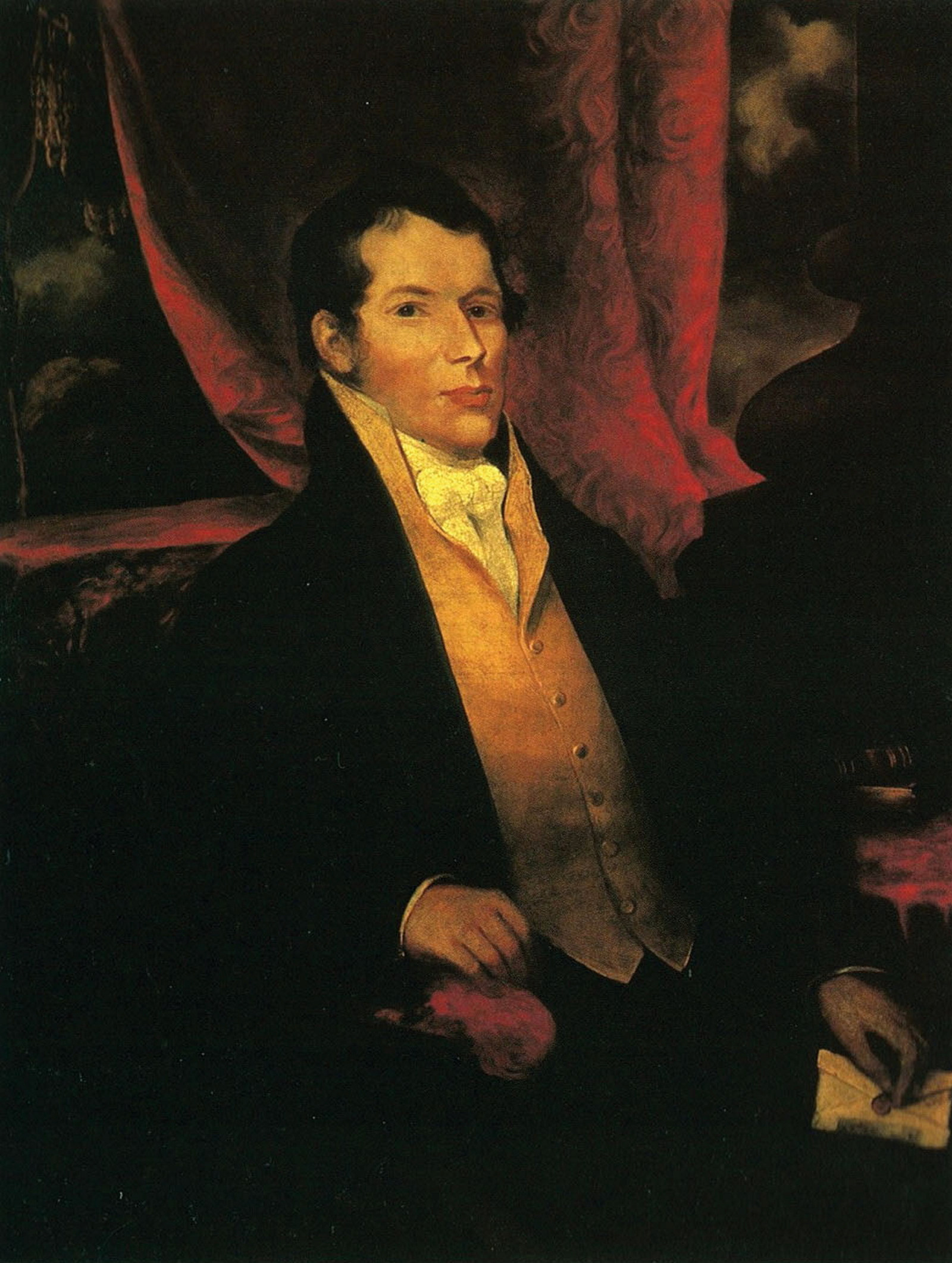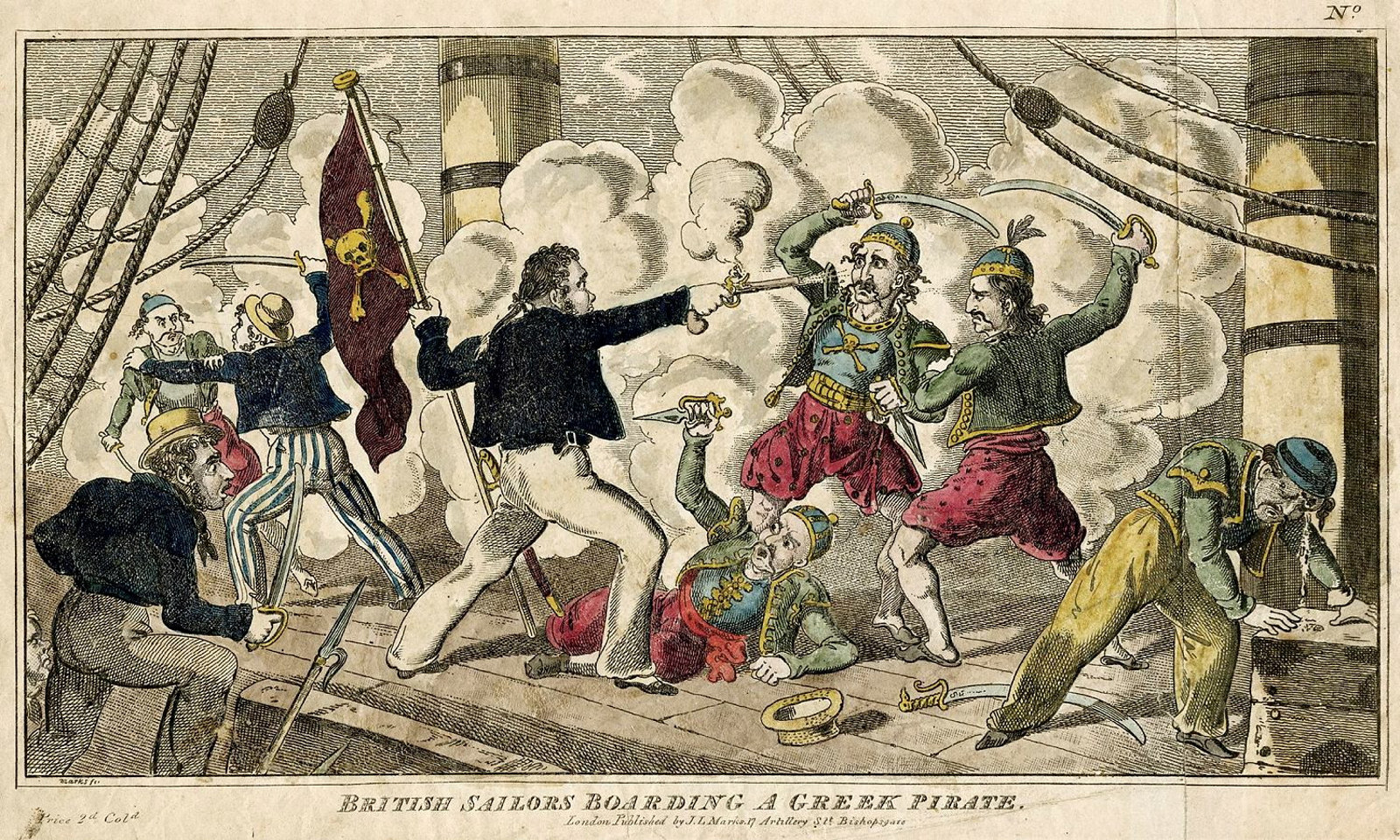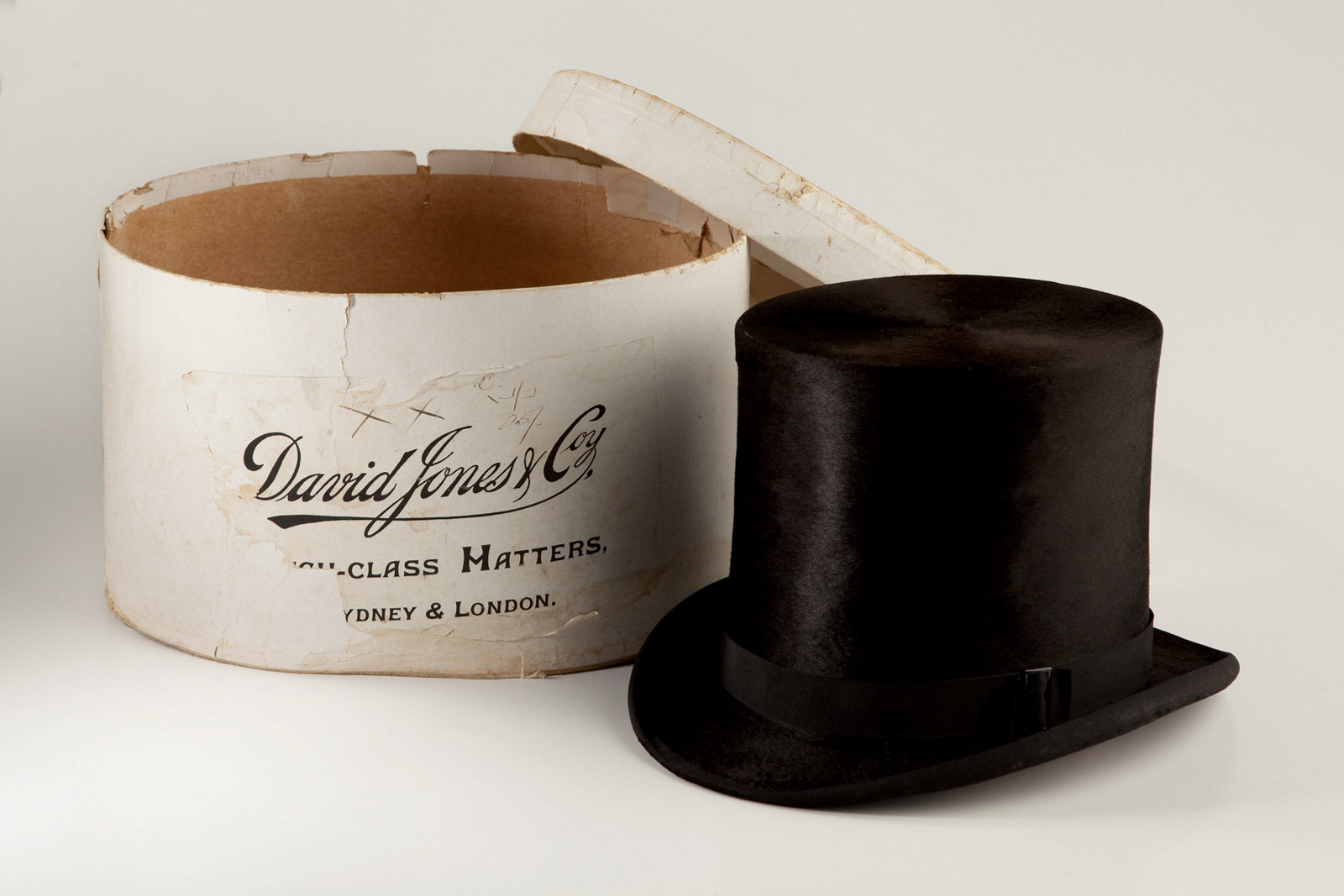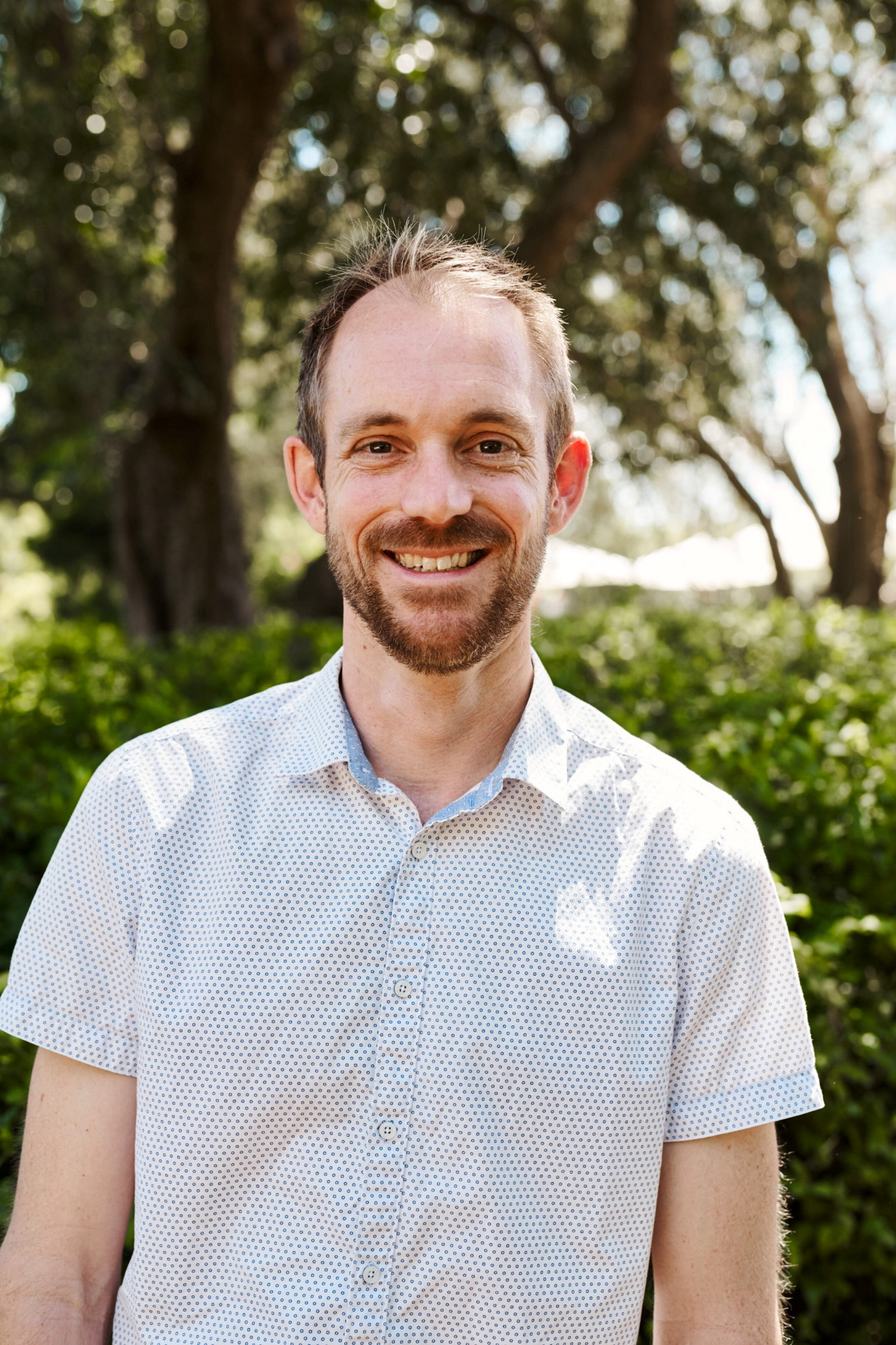James Watsford, coachman for the Macarthurs
‘An honest, faithful, affectionate Servant’
From convicted horse thief to trusted coachman for the Macarthurs, and finally coach proprietor, the story of James Watsford shows that with a little luck and the right connections some convicts were able to turn their fortunes around.
James Watsford was the proverbial ‘convict who made good’. Originally transported to NSW for life for horse theft, he would later be described as ‘a much respected townsman’, the ‘great great, grandfather … of all Coach Proprietors in this Colony’.1 By the time of his death he had spent 19 years as a well-known figure. He ran coaches daily between Parramatta and Sydney, to Windsor and even over the Great Dividing Range to Bathurst. He bought coaching inns, sold horses and sent his children to the new Kings School at Parramatta. A monument erected at Mount York in the Blue Mountains in 1974, at the request of his descendants, commemorates a daring descent down the back of the mountain range, and celebrates Watsford’s role as a colonial ‘pioneer’. What is obscured in the references to Watsford’s success as a ‘coach proprietor’ is his previous status at Elizabeth Farm. When he established his coach service between Parramatta and Sydney, he had already been driving the Parramatta Road for nearly a decade as John Macarthur’s trusted coachman. And he was not employed as a free man. Watsford was one of the many convicts working off their sentence on the Elizabeth Farm estate.
A ticket-of-leave man
As a ‘ticket-of-leave’ man, Watsford’s status at Elizabeth Farm was somewhere between that of the assigned convicts and the non-convict workers. Like parole today, a ticket of leave meant that Watsford was technically still serving out his life sentence but had the freedom to choose his own employment within the colony. This exchange of favourable treatment for good behaviour was formalised in the ticket-of-leave system. But it also governed the relationship between assigned convict servants and their masters. In evidence presented to Commissioner John Bigge’s inquiry into the administration of the colony of NSW, John Macarthur stated: ‘I select the Most Steady Men in my employment as household servants, and they, with few exceptions are sensible to the indulgences they receive, and, upon the whole behave well’.2
Both his temperament and circumstance seem to have worked in Watsford’s favour. After arriving in Sydney on the Guildford in 1812, he was assigned as a servant. Convicts either worked in the government gangs, or were assigned as workers to private individuals in the colony. Watsford’s master, Captain Coane, an officer in the 73rd Regiment, had arrived on the same ship, and it is likely the two became known to each other over the four months and 15 days at sea. When Coane’s regiment left the colony in 1814, he recommended Watsford for a ticket of leave. Quickly granted, this gave him freedom to seek out his own employment.
The world of the Macarthurs
With this limited freedom, Watsford entered the world of the extended Macarthur clan, and experienced a rapid succession of life-changing events. He first found employment with John Macarthur’s nephew Hannibal Hawkins Macarthur (1788–1861), who, since August 1812, had been assisting his aunt Elizabeth, John’s wife, with John’s business and pastoral interests. Elizabeth was managing the family estates while her husband was living in exile. In December 1814, Watsford married Jane Johns, whose father, Benjamin, had been a sergeant in the NSW Corps, in which John Macarthur had been a senior officer. A daughter, Elizabeth, the first of ten children, was born five months later.
Fatefully, Watsford then found himself appointed as an overseer on Hannibal’s farm at Bringelly, approximately two-thirds of the way between Parramatta and John Macarthur’s property at Camden. Here he experienced the often violent interactions between the colonists and the Aboriginal groups who already called the Cumberland Plain home.
This was around Darug and Dharawal Country, land also visited by the Gandagarra people of the mountains. After British soldiers shot and killed a Gandagarra boy in 1814, a chain of revenge attacks followed, including at Bringelly. These ultimately led to the Appin Massacre in 1816, in which at least 14 Aboriginal men, women and children were killed when troops fired on a camp near the Cataract River.3
Amid this escalating conflict, in August 1815 the Sydney Gazette reported that one Sunday afternoon a group of 30 to 40 Aboriginal people had gone to the Watsfords’ hut. James ‘remonstrated’ with some in the group over the theft of a blanket. At some point in the argument, he was speared with a barbed spear above the groin, ‘the point entering a little above the loins on one side, and shewing itself in an oblique direction on the other side’. As she tended to her husband, Jane was herself wounded, with a spear in the foot. The Gazette claimed that three other labourers on the farm were detained while the Watsfords’ hut was raided: six bushels of wheat, a steel mill, a sieve, a musket and other property were taken. James was taken to the Parramatta hospital, ‘where he remains with little hope of his surviving the extracting of the spear head’.4 For Jane, herself wounded, it must have been a harrowing time.
Somehow, Watsford survived. It is unclear what happened to Jane and James Watsford over the next two years; what we do know is that in 1817, the same year John Macarthur returned to NSW from England, Watsford began working as his coachman, a role he would perform for the next nine years.
John Macarthur’s trusted coachman
The role of coachman was a position of some responsibility in the household. Watsford would have managed the stables, taken care of the horses and maintained the many carriages owned by the Macarthurs. (Well before Watsford began working at Elizabeth Farm, John Macarthur was sending carriages to the colony for both use and sale, and his daybooks contain numerous receipts for the repair and building of carriages.) Watsford would have also played a more public role in projecting and maintaining the image of the family, as The complete servant, a guide for employers, makes clear: ‘On the sobriety, steady conduct, and respectable appearance of this important servant [the coachman] depend the exterior appearance of the family with which he resides’.5
In exchange for his service, Watsford was clothed, fed and housed by the Macarthurs, and his family were incorporated into the broader workings of Elizabeth Farm. James appears regularly in the estate’s daybooks, paid £40 per year, with allowances for boots, and in 1822 we see Jane paid for her work as a washerwoman. In 1819, Macarthur paid for shoes and repairs to ‘a house for Watsford’; this was probably located close to the stables, to the north-west of the main house.
Over time the Watsfords took their place among a group of servants, and often their families, who had become close to, and trusted by, the Macarthurs. When the Irish convict Patrick Neville, who worked for Macarthur at Elizabeth Farm, was suspected of stealing a box, it was Watsford who was entrusted with the task of taking him to jail. On the way he tried to persuade Neville to say who had taken the box, to which Neville replied that ‘he had never stagged [informed] before in his life, but he would be damned if he would not now’.6 (Neville apparently later changed his mind about informing and was confined in a solitary cell by the magistrates.) With John Macarthur frequently moving between Sydney, Parramatta and Camden, Watsford would often travel alone with the Macarthurs’ horses and carriages. In 1824, John wrote to Elizabeth from Camden, asking ‘if you will order Watsford to meet me with the Curricle (the light one) at Liverpool tomorrow’.7 A curricle was a small gentleman’s carriage. That John specified ‘the light one’ indicates he kept at least two, in addition to larger vehicles.
Your Petitioner … respectfully solicits that Your Excellency will be pleased to recommend him to the merciful consideration of His Majesty, and humbly trusts that fourteen years of uninterrupted good conduct may be deemed a sufficient atonement to the Offended laws of his Country to warrant the extension to him of a Free Pardon, which great boon he thus ventures (chiefly on account of his Family) most earnestly to implore. And your humble Petitioner, as in duty bound, will ever pray,
James Watsford
The petition from James Watsford, Historical Records of Australia, Series 1, vol XII, p291
A free man
Watsford applied for a full pardon in 1826, 14 years after his original sentencing. In contrast to his public statements deploring the low moral character of convicts, Macarthur wrote a glowing reference in support of his coachman:
I do not know a more honest, faithful, affectionate Servant, a better husband, or a kinder parent to his family. He has served me as a Coachman nearly nine years, and I feel myself bound in justice to offer my humble testimony in his favor, and respectfully to intreat the favorable consideration of your Excellency towards the Petitioner. JOHN MACARTHUR.8
The pardon was given, and a new stage in Watsford’s life began.
An early history of Methodism in NSW mentions Watsford as being among the first converts of the Methodist missionary Reverend Samuel Leigh. The history, written years later, in 1904, and possibly based on the memories of James’s second son, John Watsford, claimed that the spearing in 1815 ‘led to religious impressions being made, which deepened into conviction. Hearing Leigh preach, he was deeply convinced of sin; and after many distressing conflicts, found peace to his soul’.9 We can wonder what these distressing conflicts refer to: his transportation for horse theft, or the events at Bringelly? The book also makes a vague reference to Watsford’s establishment as a coach proprietor:
His friends suggested that as a means of livelihood he should start as a carrier, running from Parramatta to Sydney. With assistance he began a small horse and cart. His integrity and punctuality, coupled with an obliging manner and unwearied diligence, soon gained for him the confidence and patronage of the public.10
What ‘assistance’ did Watsford receive, and who were the ‘friends’? There is the distinct possibility that they included the Macarthurs. We know that Watsford was a trusted servant and well supported by John in his application for freedom in 1826. And in 1827, a receipt in John’s daybook refers to a ‘Livery Coat and trimmings’ for Watsford, made by the Macarthurs’ tailor John Grounds. This receipt was written within two weeks of Watsford’s pardon being published in the Gazette and when he was no longer working as John’s coachman. We also know that the Macarthurs kept track of some of their previous servants. In 1832, Elizabeth wrote in a letter to her son Edward that ‘our old servant, Watsford, drives a stage coach from Parramatta to Sydney and back again every day in the week’.11 By now, Watsford was well established as a coach proprietor in Parramatta, and the family, now including eight children, were prospering.
An ‘enterprising townsman’
After receiving his pardon in May 1826, Watsford began his new career as a coach proprietor, and his service was up and running within weeks. In November an advertisement from Watsford in The Australian thanked the public for the encouragement he had received over the past five months, announcing ‘that in addition to the Caravan that has been running, between Parramatta and Sydney, a Pair-horse light Coach will start for Parramatta, from Mr. Austin’s George Street Sydney, every evening, at 4, P. M.’12 Over the following decades, notices in the Sydney newspapers outline the evolution of the Watsfords’ dynamic family business. His coach runs expanded to Windsor and Bathurst, partnerships were made and dissolved, and Watsford’s interests diversified to running coaching inns and selling horses. The coaches, carrying the Royal Mail, became a conspicuous part of the Parramatta streetscape, as described by a correspondent to The Sydney Monitor:
This morning the village clock had hardly gone half-past five, when our enterprising townsman and coach proprietor, Mr James Watsford, drove out of his yard a very neat coach, as a Royal Mail, to run from this to Penrith twice a week; the horses were in fine order and caparisoned in the best style, with large bunches of ribbons attached to their bridles. The new Penrith Royal Mail was crowded with passengers, buzzing as the vehicle passed through the town, being overjoyed to witness so laudable an undertaking.13
By the time of his death in 1845, Watsford had achieved a level of success and social prominence that is at odds with the harsh treatment experienced by some convicts. He had a flourishing business, had raised 12 children with Jane, and would be remembered as a popular Parramatta identity. Not all convicts had the luck and success of Watsford, but for some a life sentence of transportation could include a path to freedom and prosperity.
Notes
- Commercial Journal and Advertiser, 13 July 1839, p4.
- John Macarthur, evidence to the Bigge Commission, quoted in J Richie, The evidence to the Bigge Reports: New South Wales under Governor Macquarie, vol 2, Heineman, Melbourne, 1971.
- See Grace Karskens, ‘Appin Massacre’, Dictionary of Sydney, 2015, dictionaryofsydney.org/entry/appin_massacre.
- Sydney Gazette, 5 August 1815, p2.
- Samuel Adams, The complete servant, Knight and Lacey, London, 1825, p372.
- Great Britain Parliament, House of Commons, Parliamentary papers, vol 26, HM Stationery Office, 1826, p277.
- John Macarthur: letters to Mrs Macarthur 1808–1832, Mitchell Library, State Library of NSW, A2898.
- Testimonial by John Macarthur in petition from James Watsford, Historical Records of Australia, Series 1, vol XII, p291.
- J Colwell, The illustrated history of Methodism: Australia, 1812 to 1856, William Brooks & Co, Sydney, p69.
- Ibid.
- Mrs John Macarthur journal and correspondence, Mitchell Library, State Library of NSW, A2906.
- The Australian, 15 November 1826, p1.
- The Sydney Monitor, 28 January 1832, p4.
Search the convicts index

Convicts index 1791-1873
140,000+ entries of certificates of freedom, bank accounts, deaths, exemptions from Government Labor, pardons, tickets of leave & tickets of leave passports
Published on
Related
Browse all
Convict Sydney
John Macarthur - Ambitious, volatile, self-confident
John Macarthur is well remembered as an ambitious and ruthless soldier who forged a powerful colonial farming dynasty

The Maltese connection: the unexpected origins of Elizabeth Farm’s convict workers
The story of three men from Elizabeth Farm shows that theft was only one reason for transportation and that Britain was far from the only source of convicts sent to NSW

Bicornes, bonnets & boaters
There’s a variety of headwear across our collections ranging in date from early to late nineteenth century

In the pink at Elizabeth Farm
Amid the late summer bounty in the garden at Elizabeth Farm, the crepe myrtle is the undoubted star of the show
